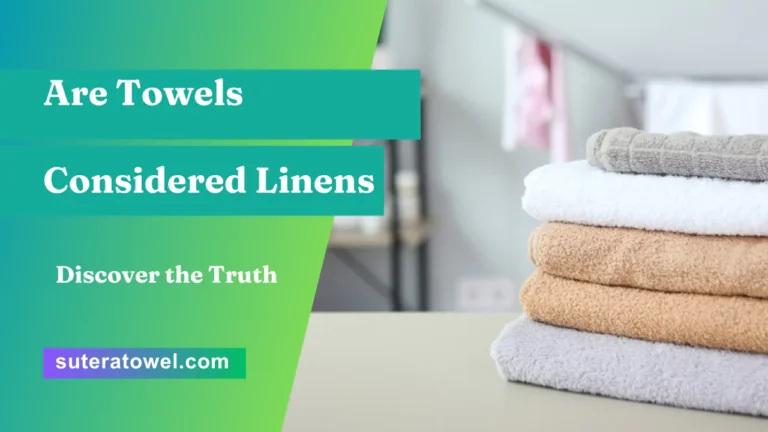Towels are considered part of the linen category, including bath sheets, towels, washcloths, and hand towels. These linens are made of absorbent and quick-drying materials for personal hygiene and other purposes.
- 1 Understanding Towels: Types And Categories
- 2 Towels Vs. Linens: Clarifying The Distinction
- 3 Towels As A Category Of Linens
- 4 The Linen Debate: Perspectives And Opinions
- 5 Utility And Functionality: Practical Considerations
- 6 Conclusion: Towels And Linens In The Home
- 7 Frequently Asked Questions On Are Towels Considered Linens
- 8 Conclusion
Understanding Towels: Types And Categories
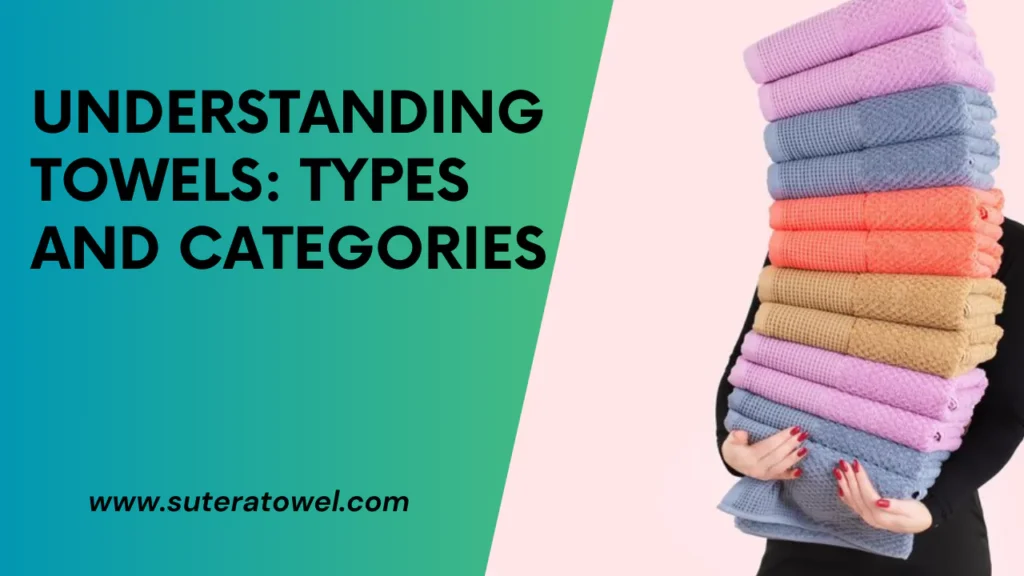
Towels are not considered linens but fall into their own category. There are different types of towels, including bath towels, hand towels, kitchen towels, beach towels, and more. Understanding the various types can help you choose the right towel for your needs.
When it comes to towels, there are different types and categories that serve various purposes. Whether you’re looking for a bath towel to wrap yourself in after a shower or a kitchen towel to dry dishes, each type of towel has its own unique characteristics and uses.
Let’s explore the different types of towels and their purposes:
Different Types Of Towels
- Bath sheets: These are oversized towels that provide maximum coverage and are perfect for wrapping around your body. They are larger than regular bath towels and offer a luxurious and spa-like experience.
- Bath towels: These are the standard-sized towels used for drying off after a bath or shower. They are versatile and suitable for everyday use.
- Washcloths: Also known as facecloths, washcloths are small, square-shaped towels used for facial cleansing. They are gentle on the skin and come in handy for removing makeup or applying skincare products.
- Hand towels: These towels are a convenient size for drying hands in the bathroom or kitchen. They are smaller than bath towels but larger than washcloths.
- Kitchen towels: Kitchen towels are used for a variety of tasks in the kitchen, such as drying dishes, wiping countertops, or handling hot pots and pans. They are made from absorbent materials to tackle spills and messes.
- Gym towels: Gym towels are compact and highly absorbent, making them ideal for wiping away sweat during workouts. They are often lightweight and easy to carry in a gym bag.
- Paper towels: Although not technically fabric towels, paper towels are commonly used for cleaning up spills and messes in the kitchen or other areas of the home. They are disposable and convenient.
- Beach towels: Beach towels are larger than standard towels and designed for lounging on the sand or by the pool. They are often brightly colored or patterned and made from quick-drying materials.
- Pet towels: These towels are specifically designed for drying off pets after bath time or outdoor activities. They are usually made from microfiber or highly absorbent materials to quickly dry wet fur.
- Face towels: Face towels are small and soft, designed for gentle cleansing and exfoliating of the face. They can also be used for removing makeup or applying facial treatments.
- Hair towels: Hair towels are designed to absorb excess moisture from wet hair without causing friction or damage. They are often made from microfiber or other quick-drying materials.
- Spa towels: Spa towels are luxurious and plush, providing a spa-like experience at home or in a professional spa setting. They are often used during massages or other spa treatments.
- Foot towels: Foot towels are small towels specifically used for drying feet or placing underfoot while getting a pedicure or a foot treatment at a spa.
Each type of towel serves a specific purpose, ensuring we have the right tool for the job. Whether it’s drying off after a relaxing bath or quickly cleaning up a spill in the kitchen, having an understanding of the different types of towels can help us make the best choice for our needs.
Towels Vs. Linens: Clarifying The Distinction
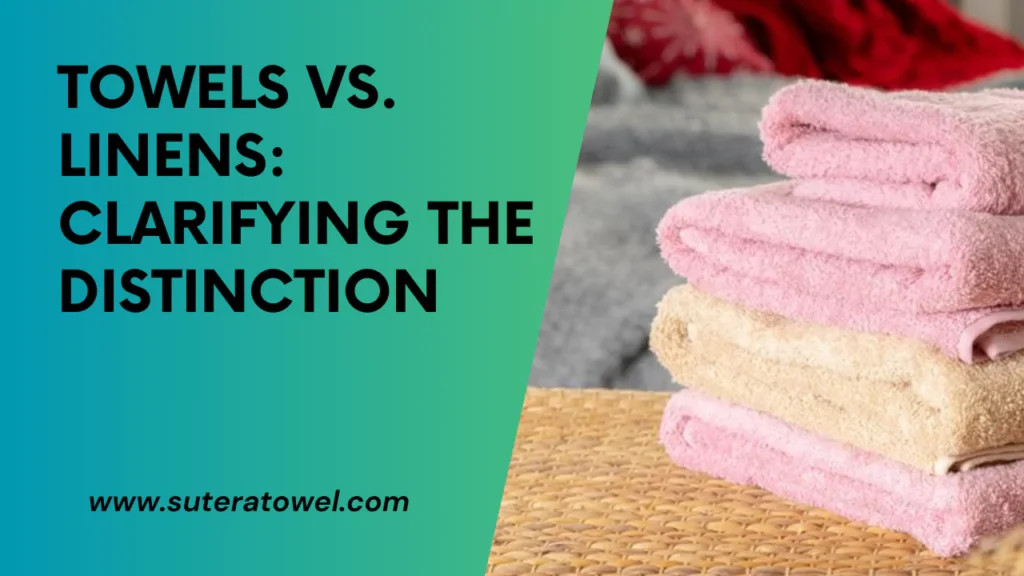
Towels are not considered linens. Linens typically refer to bed and table linens, while towels are specifically designed for drying and cleaning purposes.
Towels and linens are essential elements of our everyday lives, but there is often confusion about whether towels are considered linens. To understand the distinction between towels and linens, let’s explore the definition of linens, and the characteristics of linens, and compare towels to linens.
We’ll also delve into the historical perspective to provide a comprehensive understanding of the relationship between these two essential items.
Definition Of Linens:
- Linens refer to textile products made from natural fibers, such as cotton, flax, or hemp. They are typically used for household purposes, including bedding, tablecloths, and towels.
- Linens are known for their softness, durability, and absorbency, making them highly sought-after for various applications in homes, hotels, and spas.
Exploring The Characteristics Of Linens:
- Linens are made from natural fibers, which give them a luxurious and timeless appeal.
- They are known for their excellent moisture-absorbing properties, ensuring comfort and hygiene.
- Linens are breathable and cool, providing a comfortable sleeping or lounging experience.
- They offer durability and longevity, making them a worthwhile investment for high-quality products.
Comparing Towels To Linens:
- Towels are a specific type of linen designed for drying and cleaning purposes.
- They are usually made from cotton or a cotton blend, which provides excellent absorbency.
- Towels come in various types, including bath towels, hand towels, and kitchen towels, tailored for specific uses.
- Unlike other linens, towels often undergo specific processes, such as terry looping, to enhance their absorbent capabilities.
Is There An Overlap Between Towels And Linens?
- While towels are considered a subset of linens, not all linens are towels.
- Towels are a distinct category within the broader linen classification, focusing solely on absorbent textiles for drying and cleaning.
- Linens encompass a wider range of products, including bedding, tablecloths, and even clothing made from natural fibers.
The Historical Perspective:
- Linens have been used for centuries, originating from ancient civilizations such as Egypt and Mesopotamia.
- Towels, on the other hand, have a more recent history, as they were primarily introduced during the Industrial Revolution and the subsequent advancements in textile manufacturing.
By understanding the definition of linens, exploring their characteristics, comparing them to towels, and considering their historical perspective, we can clarify the distinction between towels and linens. While towels are indeed a part of the wider category of linens, they serve a specific functional purpose, emphasizing absorbency and practicality.
Are Pillows Considered Linens? Details Information
So, the next time you’re discussing linens, you can confidently differentiate between towels and other types of luxurious textile products.
Towels As A Category Of Linens
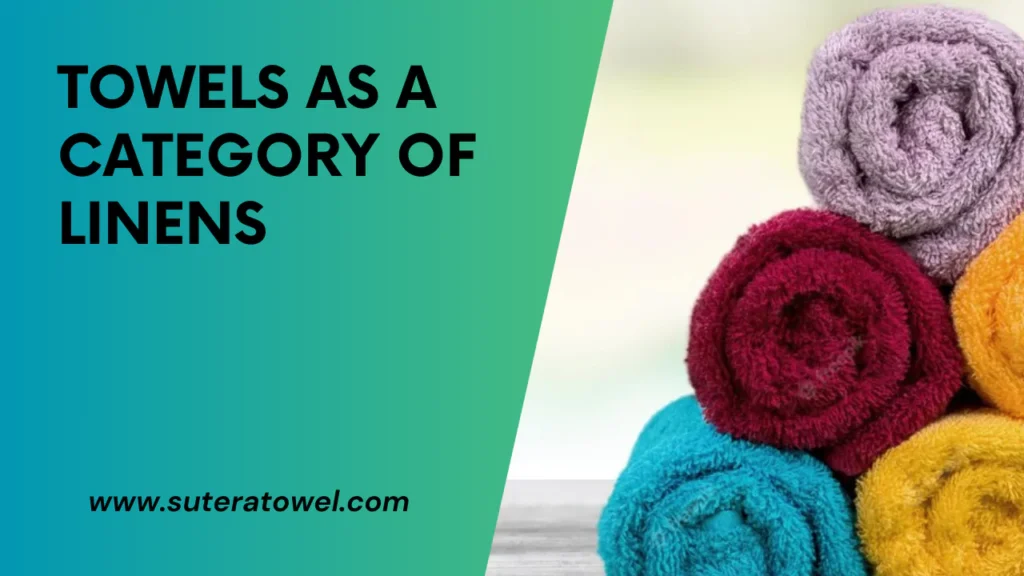
Towels are considered linens and fall into the category of linens. They include various types such as bath sheets, hand towels, and kitchen towels.
Towels are often considered a category of linens due to their commonalities and similarities with other household linens such as bedding. Here are some points to consider when discussing towels in relation to the broader linen category:
- The argument for considering towels as linens:
- Towels are typically made from linen or cotton, which are both materials commonly used in the production of linens.
- Towels serve a similar purpose as other linens, providing comfort, absorbency, and hygiene in various household settings.
- Many retailers and manufacturers classify towels as linens, further supporting their inclusion in this category.
- The commonalities and similarities:
- Towels share similarities with other linens in terms of their fabric composition and functionality.
- Like other linens, towels come in different sizes, colors, and designs to suit individual preferences and complement interior décor.
- Towels, like bed linens, are essential for daily use and contribute to the overall comfort and aesthetics of a living space.
- Why towels may be included in the broader linen category:
- Towels are frequently used alongside bedding and other household linens, making them integral to the linen category.
- Many organizations, including hotels and spas, classify towels as part of their linen inventory, highlighting their connection to the broader category.
- Both towels and linens serve similar purposes in terms of personal care, cleanliness, and enhancing the overall look and feel of spaces.
- Towels’ relationship to bedding and other household linens:
- Towels are often grouped together with bedding and other household linens due to their shared usage in similar settings.
- Bedding and towels are often purchased together to create a cohesive and coordinated look in bedrooms and bathrooms.
- Towels and bedding also require similar care and maintenance practices, such as washing, drying, and storing, further emphasizing their relationship within the linen category.
Considering the fabric composition, functionality, common usage, and relationship to bedding and other household linens, towels can be rightfully classified as a category of linens. By including towels in the broader linen discussion, we acknowledge their essential role in everyday life and the overall aesthetic appeal they contribute to our living spaces.
The Linen Debate: Perspectives And Opinions
Linen, a versatile textile derived from the flax plant, has sparked debates and discussions among experts, consumers, and enthusiasts for centuries. This debate revolves around its various qualities, uses, and sustainability. Here, we explore some key perspectives and opinions on the linen debate.
Arguments against towels being classified as linens:
- Towels are made of different materials: While linens are typically made from flax fibers, towels can be made from cotton, microfiber, or other synthetic materials. This difference in materials can impact their classification as linens.
- Towels have a distinct purpose: Unlike linens that are used for bedding and tablecloths, towels serve a specific function, primarily for drying or wiping. This functional difference can contribute to the argument against towels being considered as linens.
- Towels have a separate industry classification: The distinction between towels and linens is evident in industry categorizations, where towels are often classified separately from linens. This classification further supports the perspective that towels should not be considered linens.
The factors that contribute to the debate:
- Historical perception of linens: Traditionally, linens have been associated with high-quality and luxurious bedding and tablecloths. This perception can influence the debate on whether towels should be categorized as linens or not.
- Differences in manufacturing and production: The methods used in manufacturing linens differ from those used in producing towels. Linens often require more intricate weaving and finishing processes, while towels have specific construction techniques for absorbency. These distinctions can contribute to the ongoing debate surrounding the classification of towels as linens.
Perspectives from industry experts and professionals:
- Opinions differ among experts: Industry professionals have varying viewpoints on whether towels should be considered as linens. Some argue that the term “linens” should be reserved for items made from flax fiber, while others believe the classification should be broader to include other materials commonly used in the production of towels.
- Focus on functionality: Some experts emphasize the functional aspect of towels and argue that they should not be associated with linens due to their specific purpose. They believe that linens should be reserved for items used in bedding and table settings.
The impact of marketing and consumer perception:
- Marketing strategies influence perception: The way towels are marketed can shape consumer perception. If towels are consistently marketed as linens, consumers may start considering them as such, regardless of the traditional definition.
- Consumer interpretation and understanding: Consumer perception plays a crucial role in determining whether towels are considered linens. If consumers view towels as synonymous with linens, the debate becomes more nuanced, and the distinction becomes less relevant.
The debate on whether towels should be considered linens is multifaceted and influenced by various factors, including the materials used, historical perceptions, manufacturing techniques, industry classifications, and consumer interpretation. While some arguments center around the distinct purpose of towels and the materials they are made from, others focus on the broader definition of linens and the changing consumer landscape.
Ultimately, the classification may vary depending on individual perspectives and contexts.
Utility And Functionality: Practical Considerations
Towels, though often associated with linens, are considered a separate category. They serve practical purposes such as drying oneself and cleaning surfaces, making them versatile and functional beyond traditional linens.
The Functionality And Utility Of Towels
- Towels are essential items used for drying the body after bathing or showering.
- They are absorbent and able to remove moisture from the skin efficiently.
- Towels are also commonly used in the kitchen for drying dishes and utensils.
- They can be used as a barrier between hot objects and surfaces to prevent burns.
- Towels serve as protective layers when sitting or lying down on a beach or grassy area.
- They can be used as makeshift pillows or cushions for added comfort.
- Towels are often used in various sports and fitness activities, such as wiping off sweat or providing padding.
- They can be utilized as cleaning cloths or rags for household chores.
How Towels Serve Different Purposes Than Traditional Linens
- Unlike traditional linens, towels are specifically designed for absorption and quick drying.
- Linens, on the other hand, are primarily used for bedding and tablecloths.
- While towels are mainly focused on functionality, linens are often chosen for their aesthetic appeal.
- Towels require frequent washing due to their extensive usage, whereas linens are typically laundered less frequently.
Towels As Versatile And Multi-Functional Items
- Towels come in various shapes and sizes to accommodate different needs.
- Hand towels are smaller and ideal for drying hands, while bath towels are larger and used for drying the body.
- Beach towels are designed for outdoor use and are typically larger in size.
- Microfiber towels are highly absorbent and quick-drying, making them suitable for travel or sports activities.
- Towels can be made of different materials such as cotton, bamboo, or microfiber, each offering unique properties.
Practical Implications For Categorization And Use
- Categorizing towels as linens can be subjective, as they serve distinctive purposes.
- Recognizing towels as separate from linens allows for better organization and understanding of their functionality.
- Understanding the practical implications of towels helps in proper usage and care.
- Considering towels as an essential household item ensures their availability and proper maintenance.
- By acknowledging the versatility and multi-functionality of towels, their usefulness can be maximized in different scenarios.
Towels play a vital role in our daily lives, serving various functions beyond traditional linens. Their functionality and utility are distinct, making them versatile and multi-functional items. Proper categorization and utilization of towels offer practical implications for efficient use and maintenance.
Conclusion: Towels And Linens In The Home
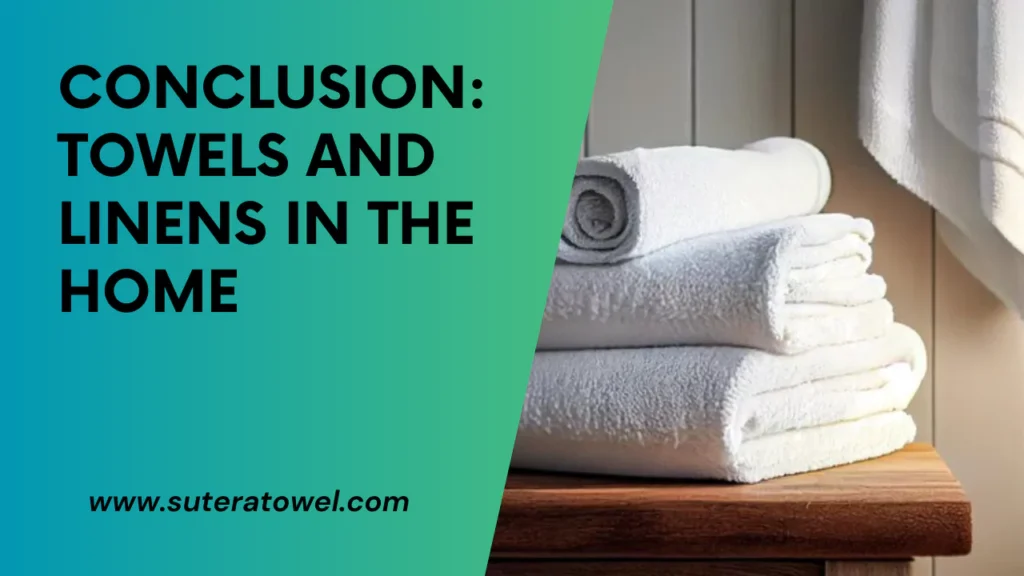
Towels are considered linens in the home and are essential for everyday use. They come in various types such as bath towels, hand towels, and kitchen towels, serving different purposes throughout the house.
The Ongoing Debate And Differing Perspectives:
- Towels and linens have long been a topic of debate among home decor enthusiasts and experts.
- Some argue that towels should be considered linens because they are often made from fabrics such as cotton or linen, which are traditionally associated with linens.
- Others, however, believe that towels are separate from linens because they are primarily used for drying and cleaning, rather than for decorative or bedding purposes.
The Importance Of Understanding The Context And Purpose Of Towels And Linens:
- It’s crucial to understand the context and purpose of towels and linens in order to determine whether they should be considered the same.
- Linens are typically associated with bedding, tablecloths, napkins, and other fabric items used for decorative or functional purposes.
- Towels, on the other hand, are primarily designed for drying off after bathing or swimming, and for cleaning purposes.
- While towels may be made from similar materials as linens, their intended use sets them apart.
Personal Preferences And Individual Interpretations:
- Whether towels are considered linens can often come down to personal preferences and individual interpretations.
- Some people may include towels in their definition of linens because they view them as fabric-based items used in the home.
- Others may exclude towels from the category of linens due to their specific purpose and function.
- Ultimately, there is no right or wrong answer, and it is up to each individual to decide whether they consider towels to be linens or not.
Making Informed Choices Based On Knowledge And Practical Considerations:
- When it comes to choosing towels and linens for your home, it’s important to make informed choices based on knowledge and practical considerations.
- Consider the specific needs and purposes for which you require towels and linens.
- Think about factors such as durability, absorbency, and ease of care.
- Take into account the aesthetic value and design of the items you choose.
- By considering these factors, you can select towels and linens that best suit your preferences and meet your practical needs.
Remember, whether you consider towels to be linens or not is ultimately subjective. Understanding the context, purpose, and individual interpretations can help you make informed choices when it comes to selecting towels and linens for your home.
Frequently Asked Questions On Are Towels Considered Linens
What Is The Category Of Towels?
Towels fall into various categories, including bath sheets, bath towels, washcloths, hand towels, kitchen towels, gym towels, paper towels, beach towels, pet towels, face towels, hair towels, spa towels, and foot towels.
Are Washcloths Considered Linens?
Yes, washcloths are considered linens. They are absorbent, soft, and quick-drying small bath towels.
What Is An Example Of A Linen?
A washcloth is a small type of bath linen that is absorbent, soft, and quick-drying.
Is A Pillow Considered A Linen?
No, a pillow is not considered linen.
Conclusion
Towels are indeed considered linens. They fall under the category of bath linens and serve various purposes in our daily lives. From bath sheets to kitchen towels, there are different types of towels designed for specific uses. Bath towels, washcloths, hand towels, and even paper towels are all part of the linen family.
These towels are made to be absorbent, soft, and quick-drying, providing comfort and functionality. Whether you’re drying off after a shower, cleaning up spills in the kitchen, or taking a trip to the beach, towels are an essential part of our household items.
So the next time you reach for a towel, remember that you’re grabbing one of the many types of linens available, all serving their own purpose in keeping us clean and comfortable.
